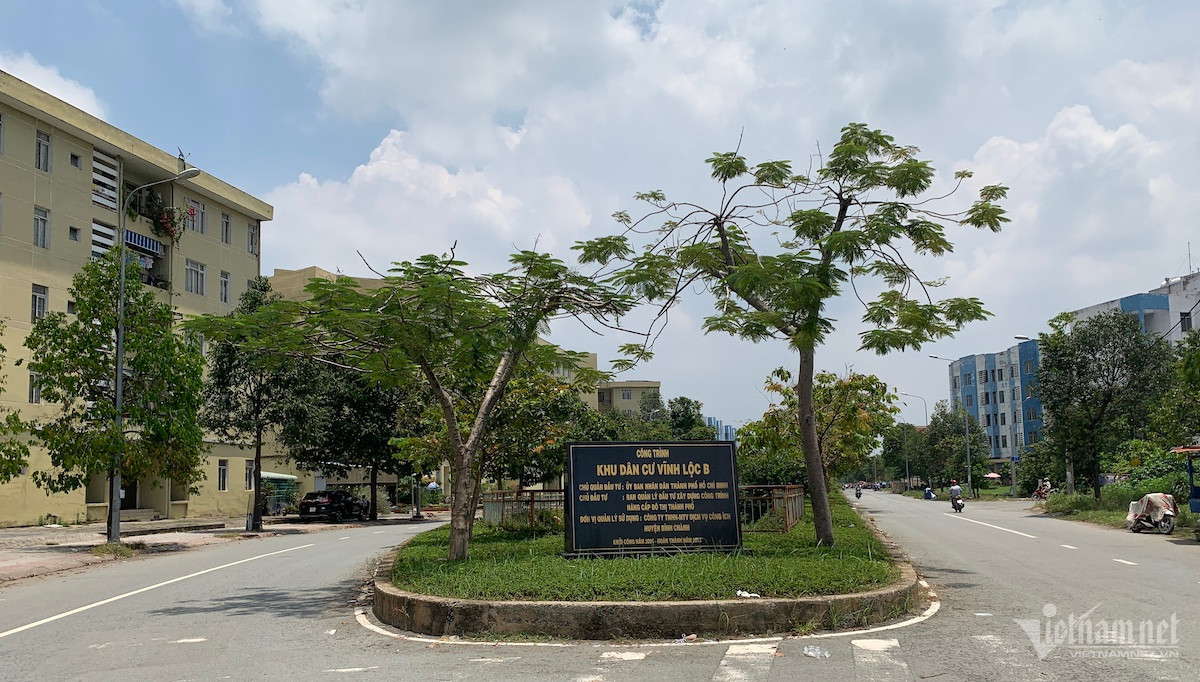
HCM City has nearly state-owned 9,000 resettlement apartments which still have not been allocated to people. While the apartments are left idle, many low-income earners don’t have accommodation.
With 2,000 apartments and 529 land plots, Vinh Loc B Resettlement Quarter is on an area of 30 hectares in Binh Chanh district. The municipal authorities wanted to build a model resettlement residential area for people who have to leave their old homes to make room for the city’s gentrification projects.
Capitalized at VND1.062 trillion and put into operation in 2013, Vinh Loc B still has 1,500 apartments unoccupied.
Tran Thi Hong, a local resident, said she moved there in 2016, after her family was required to give back land to the state to improve Tham Luong – Ben Cat – Nuoc Len canal (the section that goes through Binh Tan district).
Hong’s family, with four members, was given a 50 sq m apartment at Vinh Loc B Resettlement Quarter.
According to Hong, though the new apartment is larger and more spacious than the old house, her life has become harder. Previously, she earned her living by selling bread and could earn VND12 million a month, but now, her income has dropped by half.
“Most local residents make a living as freelancers or factory workers. When we moved here, the area was nearly deserted. There were 60 apartments, but there were only 10 households. Some households moved here but left again just after several months as they could not find jobs,” Hong said.
Three households in Binh Tan district had to give back land to the state like Hong, and they were also allocated apartments here, but they still have not moved in because they don’t know how they can make living there.
In addition to the low population density and lack of jobs, the degradation of the buildings at Vinh Loc B Resettlement Quarter is also why people don’t want to live there. Ten years after the residential quarter was put into use, many apartments are damaged.
“The area painted white has become grey because of mold. The exteriors of many buildings are spotted with peeling paint. The walls inside apartments are cracked. Because of overgrown plants and trees, it impossible to differentiate park from sidewalk,” said Nguyen Thi Hoa, a local resident who moved there in 2018.
What do people want?
Unlike Vinh Loc B Resettlement Quarter which is 20 kilometers away from the city’s central area, the Binh Khanh 38.4 hectare Resettlement Quarter in Thu Duc City is located in a more advantageous position. However, despite the good location, the quarter cannot attract people.
The quarter was built under the program on building 12,500 apartments for resettlement purposes for households who had to give back land to the state to make room for the Thu Thiem new urban area.
Except for some apartments which have been occupied and the other 5,500 apartments expected to be turned into commercial housing products, there are still 4,800 unoccupied apartments.
Hoang Van Tao, a local resident, told VietNamNet that his family of four has been living in a 70 sq m in the resettlement area since 2017. It is inconvenient to live there because there are still not enough amenities inside the residential area.
Tao’s family is one of the nearly 2,000 households that have received apartments at the Binh Khanh resettlement residential quarter.
Meanwhile, other households, who also had to leave old homes to make room for the Thu Thiem new urban area, refused apartments allocated to them, but chose to receive compensation in money instead of apartments. With the money given by the state, they can buy new houses for themselves.
However, compensation for site clearance is still not finished because the households have not accepted the compensation level offered by the local authorities.
Thousands of apartments have been left idle for a long time. The question is why people don’t want the apartments allocated to them.
“I think that it would be better if the state gives fair compensation to households and pay in cash, so that the households can find new accommodations for themselves,” he said.
“It is really a big waste to build so many apartments and then leave them idle."
Anh Phuong - Chi Tai